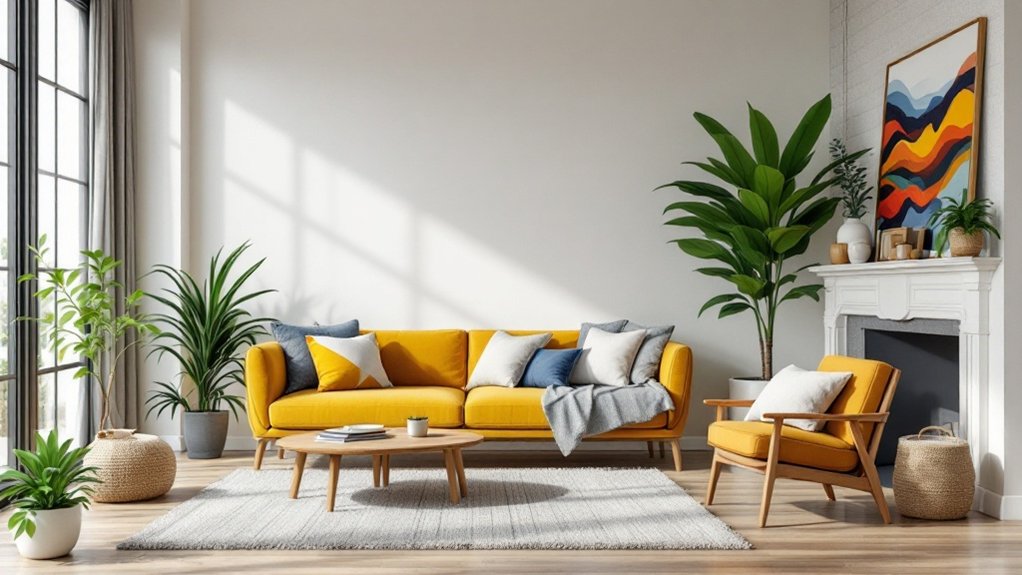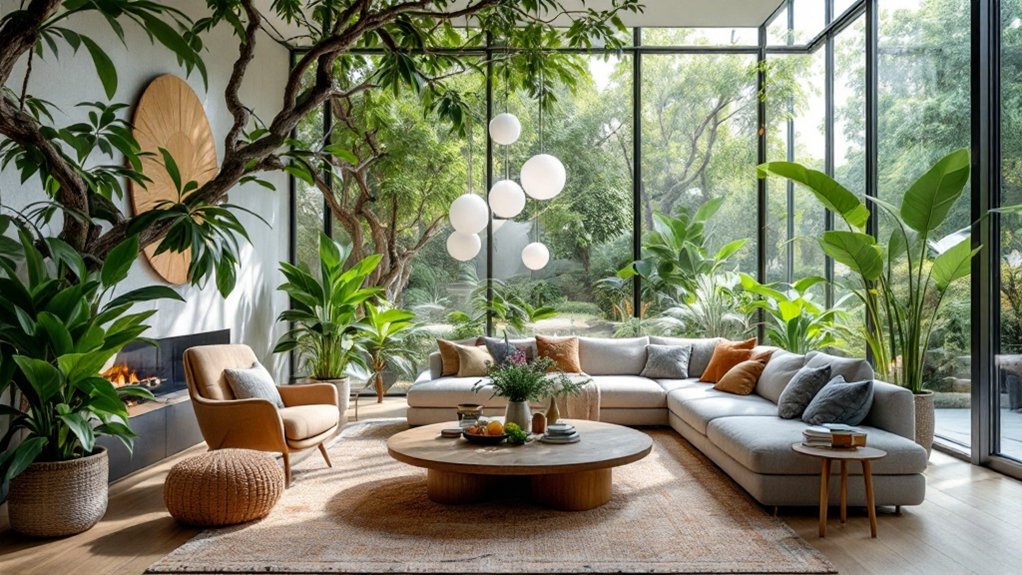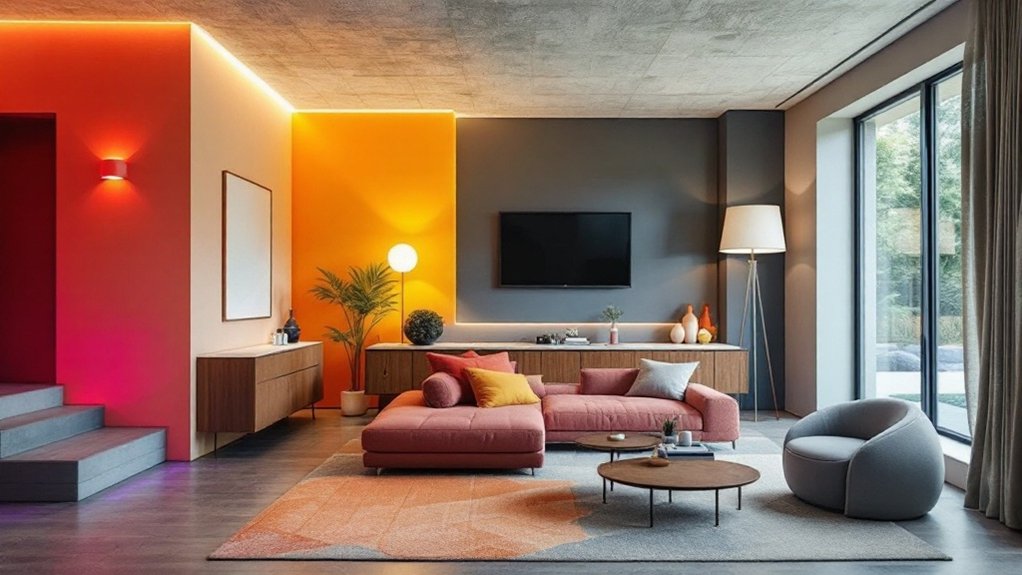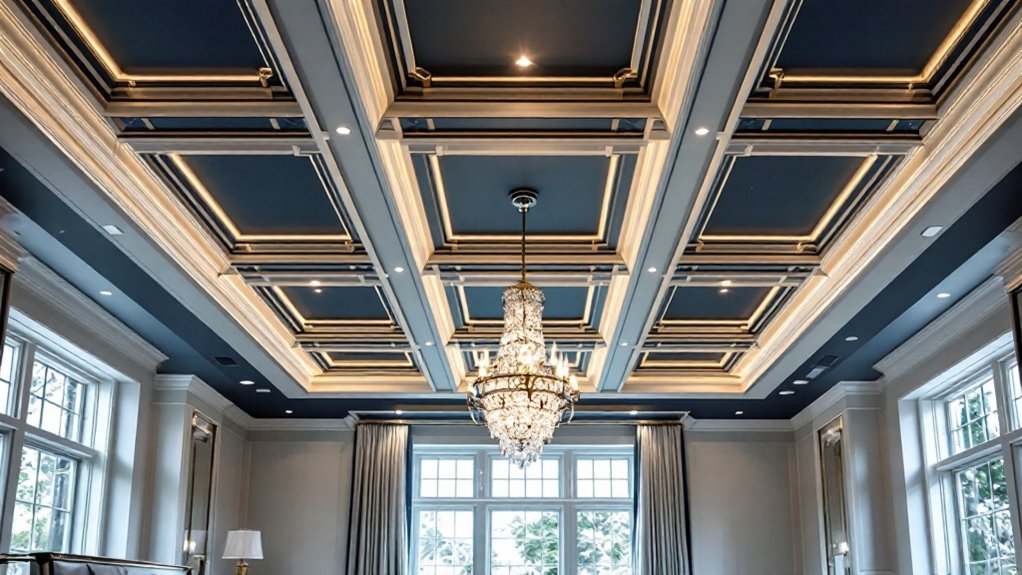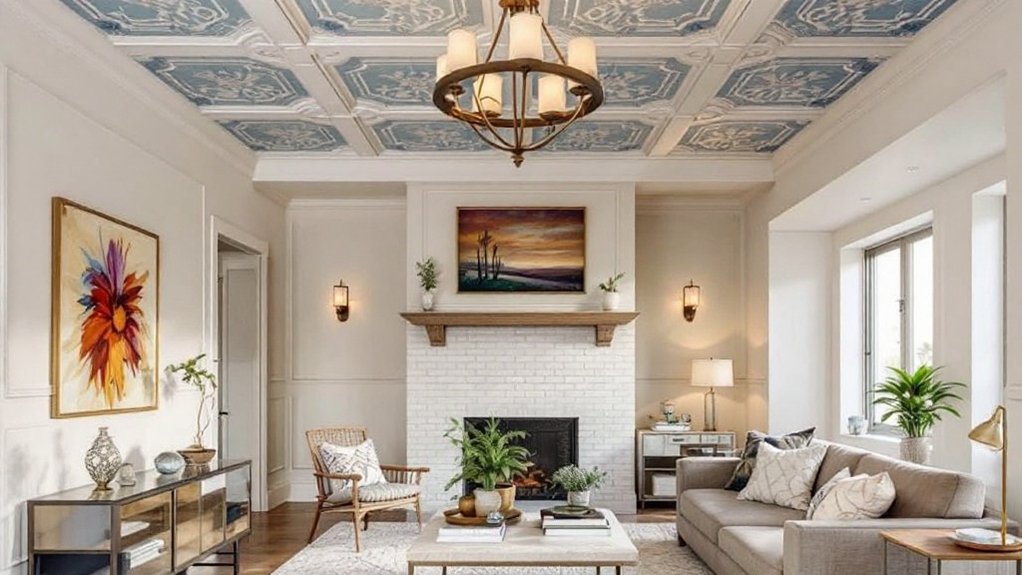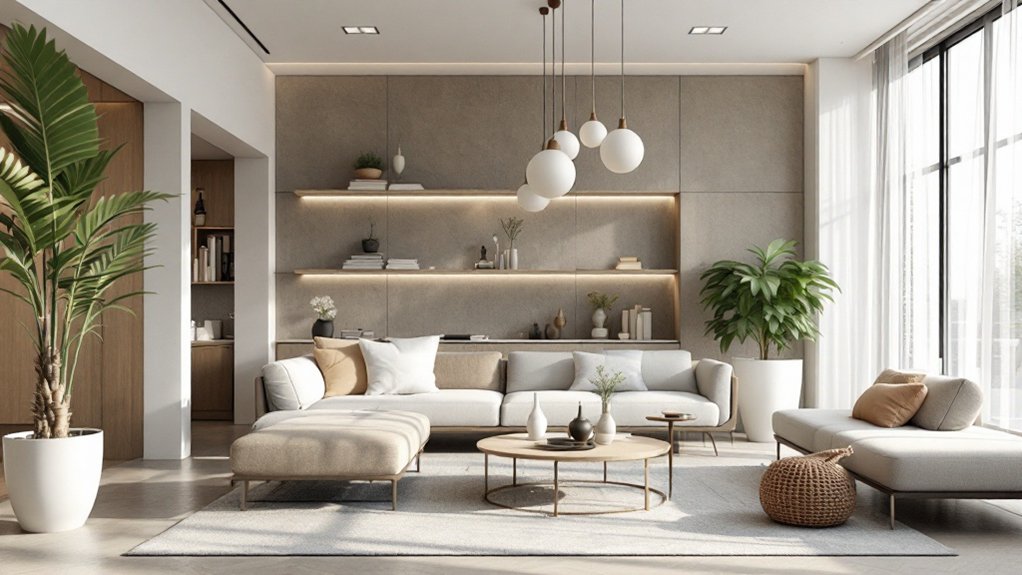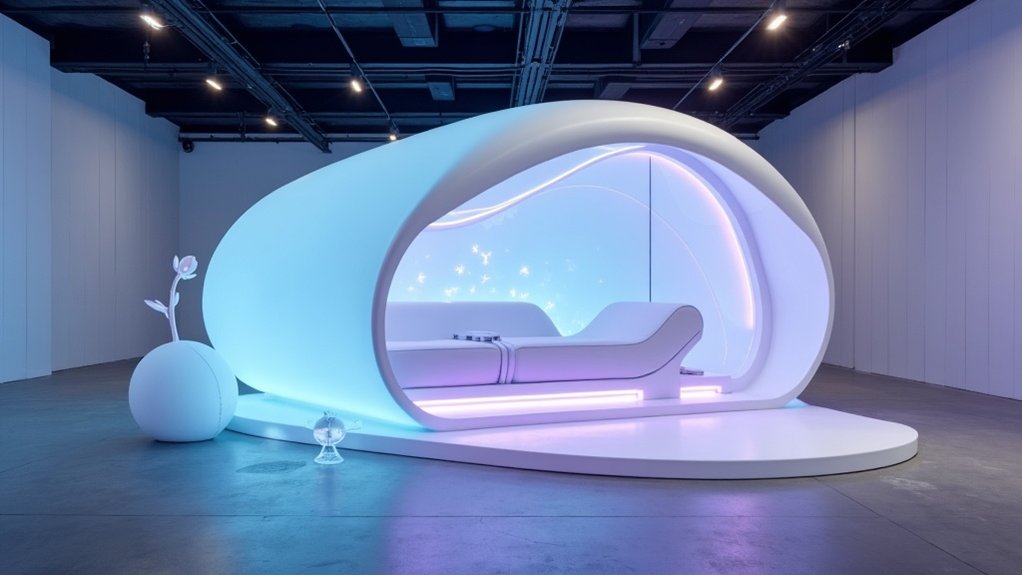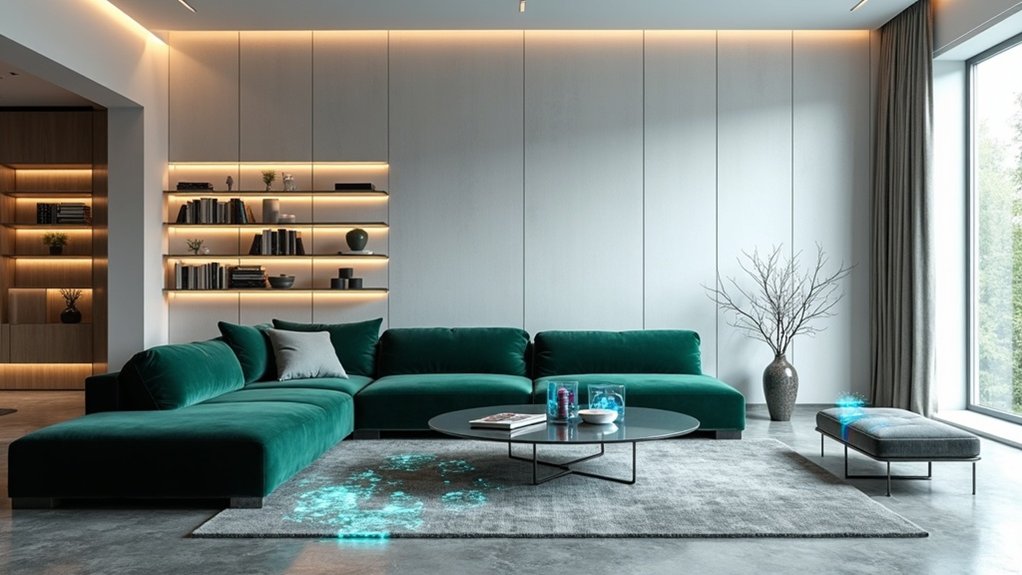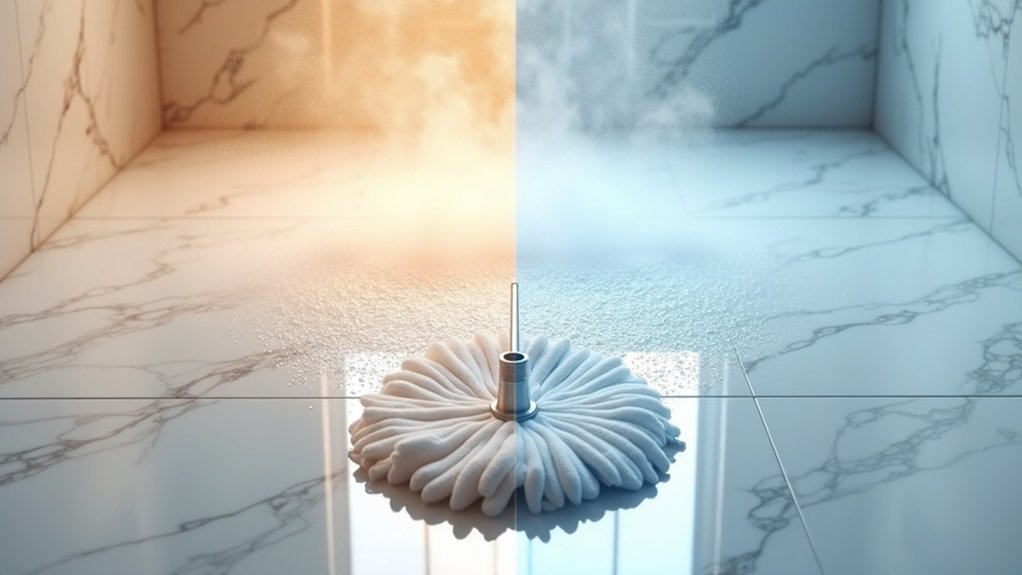Current interior design trends emphasize wellness-focused aesthetics and sustainable living through a fusion of Scandinavian minimalism and Japandi style. Natural materials, including stone and organic textiles, combine with smart technology for improved functionality. Biophilic elements introduce calming greenery and natural light, while bold color choices featuring saturated hues and jewel tones create immersive environments. This sophisticated blend of nature-inspired design and modern convenience represents an evolving approach to creating thoughtful, personalized spaces.
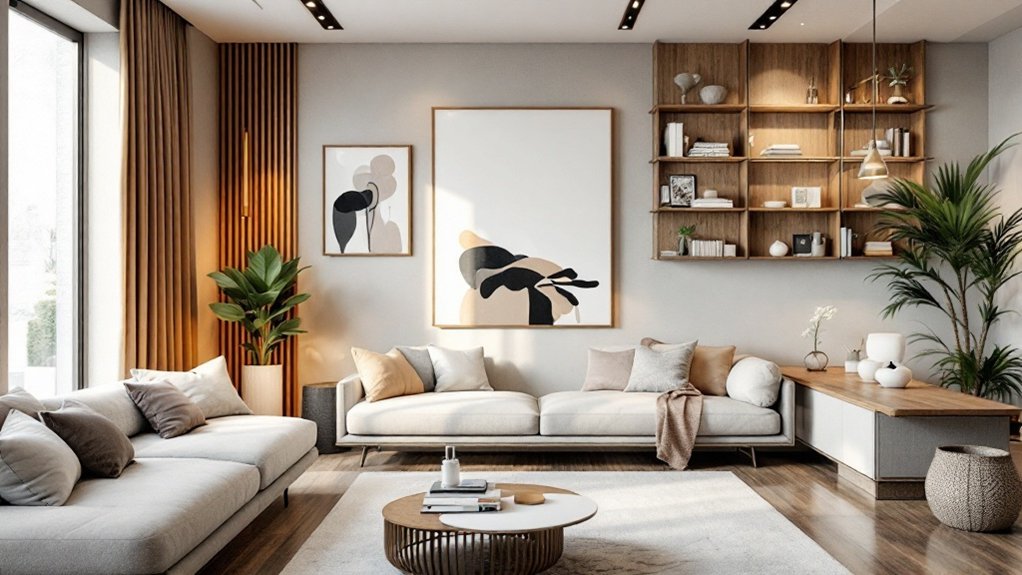
As interior design continues to evolve in response to changing lifestyles and global influences, several distinctive trends have emerged that reflect a growing desire for both functionality and emotional resonance in living spaces. The fusion of Scandinavian and Japandi styles exemplifies this evolution, combining minimalist principles with warm, natural elements to create serene yet inviting environments that promote wellness and reduce stress through thoughtful design choices.
The emphasis on texture and materiality has become increasingly prominent, with designers incorporating varied surfaces through decorative plaster, wood paneling, and mixed metals. Natural materials like stone, clay, and organic textiles add depth and tactile appeal while supporting sustainability initiatives. Many designers are incorporating soft rugs and candles to create immersive environments that engage multiple senses. The shift away from glass top tables reflects a growing preference for more practical and timeless furniture selections.
Modern design celebrates tactile diversity, weaving natural materials and varied textures into sustainable spaces that engage both sight and touch.
These elements work in concert with biophilic design principles, which integrate natural light, greenery, and outdoor connections to improve well-being and create tranquil living spaces.
Color trends have taken bold directions, with saturated hues and color drenching techniques replacing traditional accent walls. Rich jewel tones and deep earth colors are being employed throughout entire rooms, creating immersive environments that ground and inspire.
This approach to color is often balanced with sustainable practices, as designers increasingly prioritize eco-friendly materials, energy-efficient solutions, and low-VOC finishes to promote healthier indoor environments.
Technology integration has become more sophisticated and unobtrusive, with smart home features seamlessly blending into décor. Voice-activated systems, wireless charging furniture, and automated climate controls improve daily living while maintaining aesthetic harmony.
This technical evolution coexists with a growing appreciation for personalization and nostalgia, as homeowners seek to create spaces that reflect their individual stories while incorporating modern conveniences.
These trends collectively represent a shift toward more thoughtful, comprehensive interior design that balances aesthetic appeal with practical functionality.
Whether through the careful selection of sustainable materials, the integration of nature-inspired elements, or the strategic use of color and technology, contemporary interior design continues to adapt to meet the evolving needs of modern living while creating spaces that promote both physical and emotional well-being.
Frequently Asked Questions
How Much Does It Cost to Hire a Professional Interior Designer?
The cost of hiring a professional interior designer varies significantly based on several factors.
On average, full-service design projects range from $2,000 to $14,000, excluding furniture and decor.
Designers typically charge through different pricing models: hourly rates ($100-$500), flat fees ($2,000-$50,000+), or percentage-based fees (10-35% of project cost).
Geographic location, project scope, and designer experience influence pricing, while online design services offer more affordable alternatives starting at $79.
Can Interior Design Trends Work in Small Living Spaces?
Interior design trends can absolutely work in small living spaces when thoughtfully adapted and scaled.
Key strategies include using multipurpose furniture, vertical storage solutions, and light-reflecting surfaces to maximize both functionality and perceived spaciousness.
Contemporary trends like biophilic elements and bold accents can be incorporated through strategic placement of smaller items, while monochromatic color schemes and minimal window treatments help maintain an open, uncluttered aesthetic that makes compact spaces feel larger.
Where Can I Learn Interior Design Skills as a Beginner?
Beginners can develop interior design skills through multiple accessible pathways.
Online platforms like Coursera and Skillshare offer structured courses covering fundamentals, while community colleges provide hands-on certificate programs.
Self-study through design books, YouTube tutorials, and industry magazines helps build foundational knowledge.
Aspiring designers can likewise gain practical experience through DIY projects and virtual design tools like AutoCAD and SketchUp, while following professional designers on social media provides ongoing inspiration.
Which Interior Design Styles Are Timeless and Won't Go Out of Fashion?
Several interior design styles have proven their staying power through the decades.
Traditional design, with its balanced proportions and refined architectural details, remains eternally elegant.
Mid-century modern continues to enthrall with clean lines and functionality, while Scandinavian design endures through its minimalist approach and natural materials.
Transitional style, which thoughtfully blends classic and contemporary elements, offers timeless versatility.
The Shaker aesthetic persists through its emphasis on craftsmanship and purposeful simplicity.
How Often Should I Update My Home's Interior Design?
Interior design experts typically recommend updating home interiors every 3-5 years to maintain a fresh, contemporary aesthetic.
Nonetheless, this timeline can vary based on lifestyle changes, wear and tear, and budget considerations.
While major renovations follow this cycle, smaller updates like changing accessories, textiles, or paint colors can be implemented seasonally.
The key is striking a balance between timeless foundational pieces and adaptable decor elements that can be refreshed more frequently.
